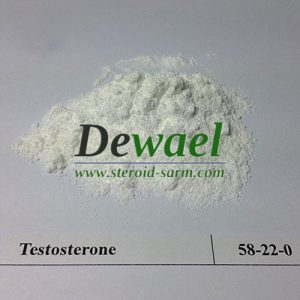CAS 94-24-6 Pharmaceutical Raw Materials Local Anesthetic Drugs Powder Tetracaine
- Fabricante: Dewael
- Ensaio do produto: 99%+
- Aparência:Pó cristalino branco.
- Lugar de origem: China
- Certificação: SGS,ISO9001, GMP
- Quantidade mínima de encomenda: 10g
- Detalhes de empacotamento: formas discretas de embalagem para Customs passagem garantida
- Tempo de entrega: Dentro 12 horas após o recebimento do pagamento
- Termos de pagamento: Western Union, MoneyGram,Bitcoin,Transferência bancária
- Remessa: EMS,DHL,Fedex,UPS,TNT e assim por diante.
- Política: Re-envio Política
- Capacidade de fornecimento: 500-600kg / mês
CAS 94-24-6 Pharmaceutical Raw Materials Local Anesthetic Drugs Powder Tetracaine
Tetracaine Basic Details
| Nome do Produto | Tetracaína |
| pseudônimo | Anetain, Amethocaine, Pontocaine,Ametop,Dicaine |
| CAS | 94-24-6 |
| MF | C15H24N2O2 |
| MW | 264.36 |
| EINECS | 202-316-6 |
| Pureza | 99.00% |
| Grau | Grau farmacêutico |
| Aparência | pó branco cristalino. |
| marca Nmae | HKYC |
| Padrão | USP38 |
| Prazo de validade | 2 anos |
| Stradge | Keep in a ventilated, dry and cool place |
| estoque | massas Stock |
| Métodos de embalagem | concebidas formas de embalagem disfarçados, 100% passar garantia personalizado |
| Tempo de entrega | dentro 18 horas após o pagamento confirmado |
| Forma de pagamento | T / T, Western Union,Money Gram , Bitcoin |
| Uso | Tetracaine is a prescription medication used to prevent pain and induce anesthesia. |
Descrição:
Tetracaína, also known as amethocaine, is a local anesthetic used to numb the eyes, nose, or throat. Tetracaine may also be used before starting an intravenous to decrease pain from the procedure. Typically it is applied as a liquid to the area. Onset of effects when used in the eyes is within 30 seconds and last for less than 15 minutos.
Tetracaine was patented in 1930 and came into medical use in 1941. It is on the World Health Organization’s List of Essential Medicines, the most effective and safe medicines needed in a health system. The wholesale cost in the developing world is about 1.34 para 1.63 USD per 10 ml bottle. In the United Kingdom the eye drops cost the NHS about 0.49 pounds per dose.
Tetracaine Application
(1) In biomedical research, tetracaine is used to alter the function of calcium release channels (ryanodine receptors) that control the release of calcium from intracellular stores. Tetracaine is an allosteric blocker of channel function. At low concentrations, tetracaine causes an initial inhibition of spontaneous calcium release events, while at high concentrations, tetracaine blocks release completely.
(2) Tetracaine is the T in Tac, a mixture of 5 para 12 per cent tetracaine, 5M(per myriad), a half per mille (0.5‰), or .05 per cent (1 part in 2000) , e 4 or 10 per cent hydrochloride used in ear, nose & throat surgery and in the emergemcy department where numbing of the surface is needed rapidly, especially when children have been injured in the eye, ear, or other sensitive locations.
(3) Tetracaine is synthesized from 4-butylaminobenzoic acid. The ethyl ester is formed through an acid-catalyzed esterification reaction. Base-catalyzed transesterification is achieved by boiling the ethyl ester of 4-butylaminobenzoic acid with excess 2-dimethylaminoethanol in the presence of a small amount of sodium ethoxide.
Tetracaine Dosage:
Tetracaine is given as an injection through a needle placed into an area of your middle or lower back near your spine. You will receive this injection in a hospital setting.
Your breathing, blood pressure, oxygen levels, and other vital signs will be watched closely while you are receiving tetracaine injection.
Spinal numbing medicines can have long-lasting effects on certain body processes such as sexual function, bowel or bladder control, and movement or feeling in your legs or feet. Talk with your doctor about these effects.
Since this medicine is given by a healthcare professional in a medical setting, an overdose is unlikely to occur.
Since tetracaine is given as needed before a surgery or other medical procedure, you are not likely to be on a dosing schedule.
Test Report(coa):
| Unid | Padrão | Resultados |
| Descrição | White or light yellow, waxy solid | Cumpre |
| Identificação | A. Dissolve 100 mg in 10 mL of dilut hydrochloric acid(1 in 120), and add 1 mL of potassium thiocyanate Solution (1 in 4): A crystalline precipitate is formed. Recrystallize the precipitate from water, and dry at 80 for 2 horas: It melts between 130 e 132. |
Cumpre |
| B: Por UV, Para combinar com o padrão de trabalho | Cumpre | |
| Cumpre | ||
| Pureza cromatográfica | Conform to standard | Cumpre |
| Perda ao secar | ≤0.5% | 0.09% |
| Resíduo na ignição | ≤0.1% | 0.03% |
| Intervalo de fusão | 41ºC~46ºC | 42.3ºC~43.6ºC |
| Solventes Residuais | Ethanol≤0.5% Acetone≤0.5% Dichloromethane≤0.06% Toluene≤0.089% Isopropyl ether≤0.5% |
Not detected Not detected Not detected Not detected 0.009% |
| Ensaio(*) | 99.0%~101,0% | 100.52% |
| Conclusão | The Sample Complies With Specification of USP38 | |
———————————————————————————————————————————————————————————————————————————————————————-
Contate agora
































Rever
Não há comentários ainda.